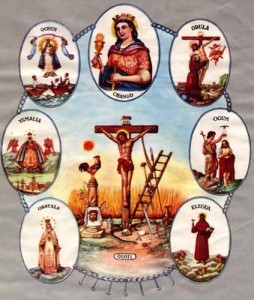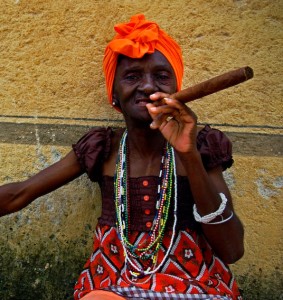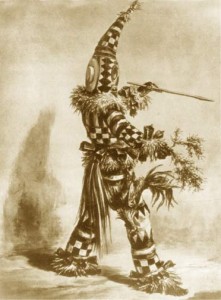- Moral Combat: Black Atheists, Gender Politics, and the Values Wars
- by Sikivu Hutchinson
- Aardvark Global Publishing , 2011
What inspired you to write Moral Combat?
As an African American feminist atheist I found that there were virtually no books that explicitly addressed the intersection of gender, race, sexual orientation, and humanist ideology from the lens of progressive politics. The most visible, widely-touted representatives of the atheist movement are white and generally male. This disparity is reflected in the leadership of most prominent secular institutions and organizations. The book deconstructs these issues and situates black humanism within a culturally relevant tradition of critically conscious scholarship and political analysis.
Further, over the past few years there has been greater interest in atheism and humanism in black and Latino communities. Black atheists/humanists struggle to make their voices heard amidst a values backlash. This backlash has had both internal and external consequences. Non-conformist African Americans are policed inside their communities by black institutions like the Black Church — they are also policed externally in a conservative reactionary climate in which public morality is based on rolling back human rights and civil rights for oppressed peoples. Religious conservatives in black and brown communities have embraced the fascistic tendencies of the Religious Right; demonizing LGBT folk, women of color and non-believers. This has occurred against the backdrop of deepening racial inequality, segregation, and economic disenfranchisement.
So the book not only attempts to contextualize African American religious fervor vis-à-vis institutional racism and white supremacy but also in relation to patriarchy, heterosexism, and capitalism.
What is the most important take-home message for readers?
An understanding of the ideological complexity of African American communities and the connections between secular belief and social justice.
Sadly, there is still a fair amount of ignorance and bigotry toward black non-believers in African American communities due to the stereotype that atheists are immoral, rudderless, and not authentically black. This belief is especially insidious for black women. Mainstream African American culture places a high premium on black female caregiving, piety, and sacrifice. The patriarchal traditions of the Black Church, with their emphasis on charismatic black male leadership and biblical literalism, play a key role in socializing black women to be subservient and self-sacrificing.
Black female churchgoing and religious belief are the highest in the nation — making African American communities the most unwaveringly religious in the U.S. At the same time, African American communities are among the most economically and racially disenfranchised; in the U.S., African Americans are still disproportionately poor, under-educated and over-incarcerated. Black incarceration rates and black homelessness parallel each other. And for all of the sound and fury of black religiosity, black women experience the highest rates of sexual assault, intimate partner violence, and HIV/AIDS contraction.
So the book tries to make sense of these relationships vis-à-vis the paradox of black downward mobility in the so-called post-racial post-affirmative action era. It also attempts to show the immense benefits of radical/progressive humanism for African American women given the religious underpinnings of patriarchy and sexism. Finally, the book makes practical connections between racial justice, gender justice, humanism and the myriad health and educational challenges that African Americans face.
Are there some things you had to leave out?
I would have liked to have done more analysis of other atheists/humanists of color.
What are some of the biggest misconceptions about your topic?
One of the biggest is that atheists of color are an oxymoron and that they live on the “margins” of their communities. The numbers of “out” or publicly self-identified atheists of color are increasing. African American women are a vocal and visible part of this population.
In the book I devote a considerable amount of time contrasting the cultural, social, and political concerns of African American atheists/humanists with that of white atheists allied with the New Atheist movement. I argue that New Atheism’s dominance by elite white males from the scientific community does not serve the broader interests of non-theist people of color. In order to make atheism and secular humanism relevant to people of color, our communities’ specific needs in a racist, sexist, heterosexist global context must be assessed.
For example, in the book I address the glut of storefront churches in urban communities of color. Storefront churches crop up with such alarming frequency because there is not enough commercial/retail enterprise in urban communities of color. This is due to the absence of sustained support for minority-owned businesses in both the government and in the financial lending industry. African American businesses constitute a mere 2% of all small-owned businesses with paid employees in the U.S. Because churches are tax-exempt they can more easily afford to lease or buy property in blighted neighborhoods. As a result, storefront churches are often the most visible social institutions in poor urban communities. Storefront churches and more traditional churches also provide social welfare and “support” services to residents and parishioners that may not be available elsewhere in poor communities. Consequently, religious practice becomes a self-fulfilling prophecy.
Did you have a specific audience in mind when writing?
I think the book will have both niche appeal and broad appeal. Non-believers of color hunger to see themselves represented in secular political discourse. Many have begun raising their voices against the rhetoric of the Religious Right and so-called secular white nationalist movements like the Tea Party. Some believe that we’re in a neo-McCarthyist period where "secular" is once again a dirty subversive word, and public figures must be chest thumpingly “Christian” to be validated as true Americans and patriots.
Moreover, as we have seen with the birthers’ vilification of President Obama, these questions about public morality and loyalty are inextricably linked in the mainstream white mind with race and cultural otherness. At the end of the day, these reactionary forces would like nothing better than to have women barefoot and pregnant, undocumented people deported en masse, gays and lesbians muzzled, ethnic studies vanquished, and black people placed under the yoke of a new-Confederacy.
Are you hoping to inform readers? Give them pleasure? Piss them off?
All of the above. Again, I think the book is timely given the depth of the right wing backlash against progressive policy. The book might increase visibility for secular humanist/atheist critics of color on national social and political issues. I examine representations of black religiosity in popular culture and deplore the mainstream fixation with the caricature of the bible-thumping Jesus-besotted eyes-cast-heavenward sacrificial black woman.
Unfortunately, this tired retrograde caricature has been resuscitated by the huge popularity of Tyler Perry, T.D. Jakes and other hyper-religious black male impresarios who shackle authentic black femininity to faith. So I also look at how media representations reinforce public morality. And I’m specifically interested in the way Judeo Christian cultural ideology (masquerading as secularism) shapes the racist sexist Aunt Jemima-to-Jezebel continuum of black femininity that still predominates in TV, film, and video. It’s the 21st century and black women are still being cast as nymphos or “bff” caregivers to hapless white women who just wouldn’t know what to do in life without their daily dose of homespun Beulah.
To my knowledge, there has never been a book-length analysis by an African American female writer that explores cultural and political issues of this nature through an atheist/humanist lens. Many critiques of organized religion by feminist African American scholars assume that faith automatically has an affirming moral role to play in black peoples’ lives. In my view, organized religion is a capitalist enterprise with specific geopolitical and ideological purposes. So, given that I reject the premise of organized religion’s moral authority, from the standpoint of a black feminist non-believer, it’s bound to piss people off.
What alternative title would you give the book?
“Godless and Bible Black” (with apologies to King Crimson).
How do you feel about the cover?
I took the picture myself, driving around South Los Angeles. Because LA’s built landscape is so auto-dominated there are many mysteriously compelling bits of architecture and roadside curiosities that one routinely misses. Storefront churches have a there-but-not-there kind of quality, a kind of elusiveness that makes them viscerally interesting. Unlike traditional stand-alone churches you rarely see congregants lingering or spilling out into the streets from the storefronts. Sometimes you’ll get a snippet of a service in drive-by; groups of testifying women and bored children scattered desultorily through pews festooned with plastic flowers. Even though they’re ubiquitous, it’s easy to miss the incredible density and stylistic diversity of storefront churches because they’re such a seamless part of the urban “mise-en-scene.” I think the picture captures the hope and desolation that many of these churches evoke.
Is there a book out there you wish you had written?
Not really. As far as recent work that I appreciate, I just finished Max Blumenthal’sRepublican Gomorrah and found it both frightening and hilarious. Blumenthal rips into the Religious Right’s corrupt political Jesus train with alacrity and wit.
I also recently read a biography of civil rights activist and intellectual A. Philip Randolph. The account made me appreciate how bold and unabashedly rigorous Randolph was in marrying free thought to social justice. As editor of the influential Messenger magazine he once sponsored a writing contest with the theme “Is Christianity a Menace to the Negro?”—a topic that is all but unthinkable today given the craven toadyism of much contemporary media.
What’s your next book?
A novel on a disreputable physicist’s drive to establish an all-black suburban development in Southern California in the era before the mortgage lending debacle.
>via: http://www.religiondispatches.org/books/rd10q/4125/

















